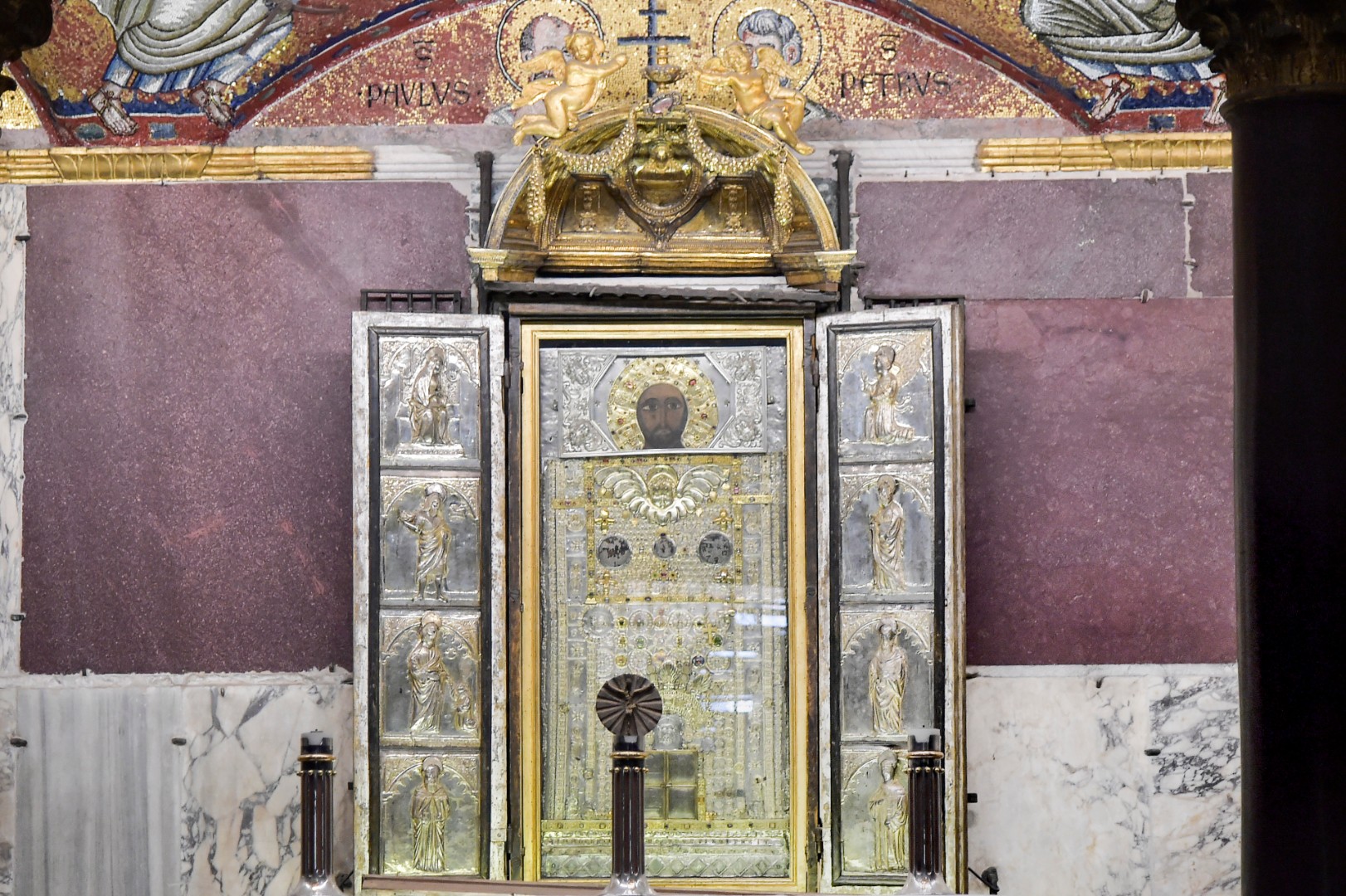The Holy Father’s private chapel, also known as the Sancta Sanctorum, is located on the first floor of the Patriarchium, and is dedicated to Saint Lawrence. This small but important chapel was conceived as a large reliquary, as ever since the seventh century it has housed important relics, as well as what is commonly known as the Acheiropoieta image of the Saviour, dating back to the fifth-sixth century.
Today, this chapel is located at the top of the Scala Sancta as a result of the renovation work carried out by Domenico Fontana at the behest of Pope Sixtus V. However, it is evident that this small oratory dedicated to Saint Lawrence was much older. In fact, the earliest reports of it date back to the time of Pope Pelagius II (579-590) and indicate the presence of important relics in the chapel. The small oratory consists of a square room whose roof is a cross vault, supported by four columns, separated from the altar area which has a barrel vault with lunettes. The inscription on the architrave dividing the altar area from the remaining part of the chapel is interesting: NON EST IN TOTO SANCTIOR ORBE LOCUS - there is no holier place in the world than this. Above this inscription, the decoration is divided into moulded three-lobed arches in which saints, apostles and popes are represented, while the central one features the Virgin and Child. A continuous marble seat is set against the walls, with a prominent inscription referring to the craftsman responsible for the marble covering, the floor and the Cosmatesque capitals: MAGISTER COSMATUS FECIT HOC OPUS.
Above the only altar of the chapel of the Sancta Sanctorum, inside a gilded tabernacle with silver doors, dating from around the sixteenth century, there is an ancient icon of the Saviour, also known as the Acheiropoieta, or made not by human hands. The image dates from the fifth or sixth century, and there are numerous references to it in various parts of the Liber Pontificalis.


